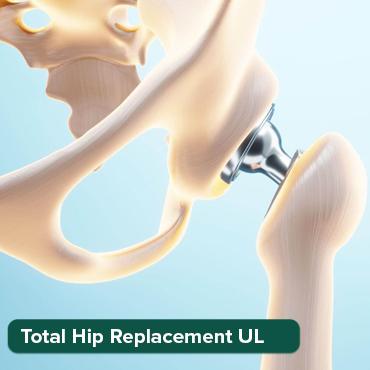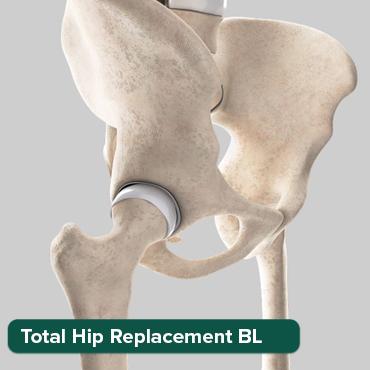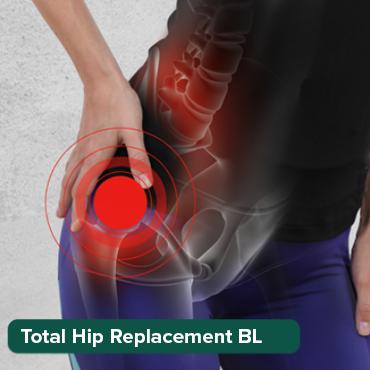
Best Hospital Infrastructure for Joint Replacement
24 Sep, 2025
 Healthtrip
Healthtrip- Why Hospital Infrastructure is Crucial for Joint Replacement Success
- Essential Infrastructure Components for a Joint Replacement Center
- Advanced Technology and Equipment in Joint Replacement: A Detailed Look
- Hospitals with Exemplary Joint Replacement Infrastructure
- Choosing the Right Hospital: Key Factors to Consider
- Cost and Accessibility of Top-Tier Joint Replacement Infrastructure
- Future Trends in Joint Replacement Hospital Infrastructure
- Conclusion
Advanced Imaging and Diagnostics
Accurate diagnosis and pre-operative planning are the cornerstones of successful joint replacement surgery. Hospitals with cutting-edge imaging technologies, such as high-resolution MRI, CT scans, and digital X-rays, offer doctors a detailed view of the affected joint. This allows for precise assessment of the extent of damage, bone density, and surrounding tissue health. Imagine the difference between navigating with a blurry map and having a crystal-clear satellite view – the latter empowers surgeons to tailor the procedure to your specific needs, minimizing risks and maximizing the potential for a positive outcome. Facilities like Fortis Hospital, Noida, and Max Healthcare Saket are known for their investment in advanced diagnostic equipment, ensuring that patients receive the most accurate and comprehensive pre-operative evaluations. Furthermore, streamlined diagnostic processes, facilitated by efficient scheduling and patient-friendly environments, contribute to a less stressful experience for individuals preparing for surgery. Healthtrip prioritizes connecting you with hospitals that place a strong emphasis on precise diagnostics, setting the stage for a well-planned and effective joint replacement journey.
Most popular procedures in India
State-of-the-Art Surgical Suites
The surgical suite is where the magic happens, and the best hospitals ensure these spaces are equipped with the latest technology and adhere to the highest standards of hygiene and safety. Look for features like laminar airflow systems to minimize infection risk, computer-assisted surgery (CAS) systems for enhanced precision, and real-time imaging capabilities to guide the surgeon during the procedure. Consider it the surgeon's ultimate workshop, designed to optimize every aspect of the operation. Hospitals like Memorial ?i?li Hospital and Hisar Intercontinental Hospital boast advanced surgical suites designed to improve surgical accuracy and patient safety, creating a more comfortable environment for both the medical staff and the patient. These advanced theatres often incorporate ergonomic designs and advanced monitoring systems, contributing to a smoother and more efficient surgical process. For patients, this translates to reduced recovery times, lowered risks of complications, and ultimately, a more successful joint replacement outcome. Healthtrip focuses on connecting you with facilities that continuously invest in upgrading their surgical suites, providing you with access to world-class technology and expertise.
Dedicated Rehabilitation Centers
Joint replacement is not just about the surgery; it’s about the entire journey, and rehabilitation is a critical component. Hospitals with dedicated rehabilitation centers offer comprehensive post-operative care, including physical therapy, occupational therapy, and pain management services. Think of it as your personal training camp, where you rebuild strength, mobility, and confidence. A well-equipped rehabilitation center should have a range of exercise equipment, skilled therapists, and individualized treatment plans tailored to your specific needs and goals. Facilities like Vejthani Hospital and Bangkok Hospital understand the importance of comprehensive rehabilitation and offer specialized programs to support patients in regaining their independence and mobility. These centers often emphasize patient education and self-management strategies, empowering individuals to actively participate in their recovery process. Through Healthtrip, you can access hospitals that prioritize rehabilitation as an integral part of joint replacement care, ensuring a holistic and supportive recovery experience. Because, let's face it, the goal isn't just to have a new joint, but to live your life to the fullest with it!
Wellness Treatments
Give yourself the time to relax
Lowest Prices Guaranteed!

Lowest Prices Guaranteed!
Why Hospital Infrastructure is Crucial for Joint Replacement Success
Imagine embarking on a journey towards a pain-free life, a journey where every step counts – quite literally! Joint replacement surgery can be life-changing, offering renewed mobility and a chance to reclaim activities you once cherished. But the success of this journey doesn't solely rely on the surgeon's skill; it's deeply intertwined with the hospital's infrastructure. Think of the hospital as the stage upon which this important drama unfolds. A well-equipped, thoughtfully designed environment provides the bedrock for a successful procedure, smoother recovery, and reduced risk of complications. It's not just about bricks and mortar; it's about creating a secure and supportive ecosystem where patients can confidently navigate their surgical experience. A modern facility, for instance, ensures access to cutting-edge diagnostic tools, minimizing delays and maximizing the accuracy of pre-operative assessments. This directly informs the surgical plan, leading to a more precise and effective intervention. Moreover, robust infection control measures, a staple of well-maintained infrastructure, are paramount in mitigating the risk of post-operative infections, a major concern in joint replacement. So, as you consider joint replacement, remember that the hospital's infrastructure is not merely a backdrop, but a critical player in your journey to renewed mobility. Healthtrip understands this, and we're here to help you navigate the landscape and find the best possible environment for your surgery.
The Human Element in Infrastructure
Beyond the tangible aspects like state-of-the-art operating rooms and advanced imaging systems, the hospital's infrastructure also encompasses the human element. A well-staffed, highly trained team of nurses, physical therapists, and support staff is just as vital as the physical environment. These dedicated professionals are the patient's guides and allies throughout the entire process, from pre-operative education to post-operative rehabilitation. Their expertise and compassionate care can make a world of difference in managing pain, promoting healing, and ensuring a positive overall experience. For example, physical therapists play a crucial role in helping patients regain strength and mobility after surgery, tailoring exercise programs to individual needs and providing encouragement along the way. Nurses are the frontline caregivers, constantly monitoring patients' progress, administering medication, and addressing any concerns that may arise. A hospital that invests in its staff, providing ongoing training and fostering a supportive work environment, demonstrates a commitment to patient well-being that extends far beyond the operating room. Think of institutions like Fortis Shalimar Bagh, where a patient-centric approach is embedded in their operational philosophy. Healthtrip recognizes the importance of this human touch and considers it a key factor when evaluating hospitals for joint replacement.
Essential Infrastructure Components for a Joint Replacement Center
So, what exactly constitutes "essential" infrastructure for a top-notch joint replacement center? It's a multifaceted answer, encompassing everything from the physical layout to the technological capabilities and the protocols in place. First and foremost, consider the operating rooms themselves. They should be meticulously designed and equipped with laminar airflow systems to minimize the risk of infection. This specialized ventilation system maintains a constant, unidirectional flow of purified air, effectively sweeping away airborne contaminants that could compromise the surgical site. Furthermore, the availability of advanced imaging equipment, such as intraoperative fluoroscopy, allows surgeons to visualize the joint in real-time during the procedure, ensuring precise implant placement and optimal alignment. Beyond the operating rooms, a dedicated recovery area with specialized monitoring equipment is crucial for post-operative care. This allows for close observation of patients as they emerge from anesthesia, ensuring prompt management of any potential complications. Moreover, a well-equipped physical therapy department is essential for rehabilitation. This should include a range of exercise machines, assistive devices, and a spacious area for patients to practice their newly acquired mobility skills. Think about the facilities at Vejthani Hospital; they exemplify this holistic approach to infrastructure.
Beyond the Basics: Prioritizing Patient Comfort and Safety
The best joint replacement centers go beyond the bare minimum, prioritizing patient comfort and safety at every turn. This includes features like private rooms with comfortable beds and accessible bathrooms, creating a more relaxing and conducive environment for healing. Noise reduction measures, such as soundproof walls and carpeting, can also significantly improve the patient experience by minimizing distractions and promoting restful sleep. Infection control protocols are paramount. This encompasses rigorous hand hygiene practices, the use of sterile equipment and supplies, and comprehensive cleaning and disinfection procedures. Regular audits and monitoring are essential to ensure that these protocols are consistently followed. Moreover, a robust emergency response system is crucial. This includes having readily available resuscitation equipment, trained personnel, and well-defined procedures for handling medical emergencies. Consider the commitment to safety demonstrated at the Saudi German Hospital Cairo, Egypt. Healthtrip carefully vets hospitals to ensure they meet the highest standards of patient safety and comfort, providing you with peace of mind throughout your joint replacement journey. After all, it's not just about fixing the joint; it's about caring for the whole person.
Advanced Technology and Equipment in Joint Replacement: A Detailed Look
The field of joint replacement has been revolutionized by technological advancements, offering surgeons unparalleled precision and control. Computer-assisted surgery (CAS), for instance, utilizes sophisticated software and imaging to create a three-dimensional model of the patient's joint. This allows the surgeon to plan the procedure in detail, optimizing implant size, position, and alignment. During the surgery, infrared sensors and tracking devices guide the surgeon's movements, ensuring that the plan is executed with pinpoint accuracy. Robotic-assisted surgery takes this a step further, using a robotic arm to perform the bone cuts and implant placement under the surgeon's direct control. This can result in smaller incisions, reduced blood loss, and faster recovery times. Navigation systems are invaluable tools, providing real-time feedback on implant alignment and stability. These systems use sophisticated algorithms to analyze data from sensors placed on the patient's bones, guiding the surgeon to achieve optimal joint mechanics. The use of 3D printing is gaining traction, enabling the creation of customized implants tailored to the individual patient's anatomy. This can be particularly beneficial in complex cases where standard implants may not be suitable. Hospitals like Fortis Memorial Research Institute in Gurgaon are leading the way in adopting these cutting-edge technologies.
The Role of Imaging in Enhancing Outcomes
Advanced imaging techniques play a pivotal role in every stage of joint replacement, from pre-operative planning to post-operative assessment. Magnetic resonance imaging (MRI) provides detailed images of the soft tissues surrounding the joint, helping to identify any underlying conditions that may affect the surgical plan. Computed tomography (CT) scans create three-dimensional images of the bones, allowing surgeons to accurately assess bone density and identify any deformities. Intraoperative fluoroscopy allows surgeons to visualize the joint in real-time during the procedure, ensuring precise implant placement and optimal alignment. Post-operative X-rays are used to assess the position and stability of the implant, as well as to monitor bone healing. Moreover, technologies like EOS imaging provide full-body, weight-bearing images with significantly lower radiation doses than traditional X-rays. This allows for a more comprehensive assessment of the patient's musculoskeletal system, helping to identify any compensatory mechanisms that may be contributing to their joint pain. Hospitals equipped with advanced imaging capabilities, such as Quironsalud Hospital Toledo, are better positioned to deliver personalized and effective joint replacement care. Healthtrip carefully assesses the technological capabilities of hospitals to ensure that patients have access to the most advanced and effective treatments available.
Also Read:
Hospitals with Exemplary Joint Replacement Infrastructure
When you're facing the prospect of joint replacement, choosing the right hospital is paramount. It's not just about the surgeons, but also the environment where the procedure takes place and your recovery unfolds. Several hospitals worldwide have distinguished themselves through their exceptional infrastructure, advanced technology, and patient-centered care in the field of joint replacement. These facilities offer a comprehensive approach, ensuring that every aspect of your journey, from pre-operative assessments to post-operative rehabilitation, is optimized for success. Let's explore some examples of hospitals that stand out for their commitment to excellence in joint replacement infrastructure.
Consider Fortis Memorial Research Institute, Gurgaon , India, a name synonymous with advanced medical care. Their orthopedic department boasts cutting-edge technology, ensuring precise diagnostics and surgical interventions. The hospital's infrastructure is designed to support a seamless patient journey, with dedicated orthopedic wards and rehabilitation centers. Similarly, Max Healthcare Saket, also in India, offers a holistic approach to joint replacement, focusing on minimally invasive techniques and rapid recovery protocols. Their state-of-the-art operation theaters and post-operative care units are equipped to handle complex cases with utmost precision. In Turkey, Memorial Sisli Hospital stands out. Their facilities are designed with patient comfort in mind, creating a healing environment that complements the advanced medical care. The hospital also emphasizes post-operative rehabilitation to ensure a smooth recovery process.
Across the globe, Vejthani Hospital in Bangkok, Thailand, has earned a reputation for its advanced orthopedic center. They offer a full spectrum of joint replacement services, from initial consultation to extensive rehabilitation programs. Their facilities include advanced imaging technologies and modern surgical suites, ensuring patients receive the best possible care. In Germany, OCM Orthopädische Chirurgie München provides top-tier orthopedic care with a focus on personalized treatment plans. Located in Munich, it boasts state-of-the-art diagnostic and surgical equipment, ensuring precision and optimal outcomes for joint replacement patients. These hospitals represent a commitment to providing world-class joint replacement services, and Healthtrip can help you navigate your options and find the facility that best suits your needs. Remember, the right hospital can make all the difference in your joint replacement journey.
Choosing the Right Hospital: Key Factors to Consider
Selecting the right hospital for your joint replacement is a decision that shouldn't be taken lightly. It's about more than just location or a fancy-looking building; it’s about finding a facility and team that can provide you with the best possible care and support throughout your entire journey. So, what are the key factors you should consider when making this important choice? First and foremost, look into the hospital's experience with joint replacement surgeries. How many procedures do they perform each year? What is their success rate? Experienced hospitals often have refined processes and protocols that can lead to better outcomes. Don't hesitate to ask for specific data and statistics, as this information can provide valuable insights into their expertise.
Another crucial aspect is the expertise of the orthopedic surgeons and medical staff. Are the surgeons board-certified and fellowship-trained in joint replacement surgery? What are their qualifications and experience? A highly skilled and experienced surgical team can make a significant difference in the success of your procedure. Furthermore, consider the hospital's infrastructure and technology. Does the hospital have state-of-the-art operating rooms, advanced imaging equipment, and modern rehabilitation facilities? Access to cutting-edge technology can enhance the precision of the surgery and improve the recovery process. Also, think about the hospital's approach to pain management. Effective pain control is essential for a comfortable recovery. Inquire about the hospital's pain management protocols and their commitment to minimizing post-operative discomfort.
Finally, don't overlook the importance of patient reviews and testimonials. What are other patients saying about their experiences at the hospital? Look for patterns in the feedback, both positive and negative. This can give you a sense of the hospital's culture, patient care practices, and overall level of satisfaction. Moreover, consider the location and accessibility of the hospital. Is it conveniently located for you and your family? Is it easily accessible by public transportation or car? A hospital that is close to home can make it easier for your loved ones to visit and provide support during your recovery. At Healthtrip, we understand that choosing the right hospital can be overwhelming. That's why we offer personalized assistance to help you navigate your options and find a facility that meets your specific needs and preferences. We can provide you with detailed information about hospitals, surgeons, and treatment options, empowering you to make an informed decision. For instance, consider hospitals like Fortis Hospital, Noida , or Vejthani Hospital , known for their patient-centric approach and comprehensive care. Remember, your health and well-being are our top priority.
Also Read:
Cost and Accessibility of Top-Tier Joint Replacement Infrastructure
One of the most significant considerations for anyone contemplating joint replacement surgery is the cost. Top-tier medical infrastructure, advanced technology, and highly skilled surgeons often come with a higher price tag. However, it's crucial to view this as an investment in your long-term health and quality of life. The cost of joint replacement can vary widely depending on several factors, including the hospital's location, the type of implant used, the complexity of the surgery, and the length of your hospital stay. Hospitals in developed countries like the United States or Western Europe tend to have higher costs compared to those in countries like India, Thailand, or Turkey. However, it's important to remember that lower costs don't necessarily mean lower quality of care. Countries like India and Thailand have become popular destinations for medical tourism, offering world-class facilities and experienced surgeons at more affordable prices. For example, hospitals like Fortis Memorial Research Institute and Vejthani Hospital provide excellent joint replacement services at competitive rates, making them attractive options for international patients.
Accessibility is another key factor to consider. Even if a hospital boasts the best infrastructure and technology, it's not the right choice if you can't easily access it. This includes both physical accessibility and financial accessibility. Physical accessibility refers to the ease of traveling to the hospital, whether it's located in your home country or abroad. Factors to consider include the availability of direct flights, visa requirements, and transportation options from the airport to the hospital. Financial accessibility, on the other hand, refers to your ability to afford the cost of the surgery and related expenses. This may involve exploring options such as medical loans, insurance coverage, or payment plans. At Healthtrip, we understand that navigating the complexities of cost and accessibility can be challenging. That's why we offer comprehensive assistance to help you find the best possible care within your budget and travel constraints. We can provide you with detailed cost estimates from different hospitals, assist with travel arrangements, and connect you with financing options.
For instance, if you're considering traveling abroad for joint replacement, we can help you compare the costs and accessibility of hospitals in different countries. We can also provide you with information about visa requirements, travel insurance, and other essential details. Ultimately, the goal is to make joint replacement surgery accessible to everyone who needs it, regardless of their financial situation or location. We believe that everyone deserves access to high-quality medical care, and we're committed to helping you achieve that. Consider hospitals like Max Healthcare Saket or Memorial Sisli Hospital, which balance quality care with accessible pricing, making them excellent options to consider. Remember, a successful joint replacement is not just about the surgery itself; it's about the entire experience, from planning and preparation to recovery and rehabilitation. And Healthtrip is here to guide you every step of the way.
Future Trends in Joint Replacement Hospital Infrastructure
The field of joint replacement is constantly evolving, with new technologies and techniques emerging all the time. As a result, hospital infrastructure is also adapting to meet the changing needs of patients and surgeons. Looking ahead, we can expect to see several key trends shaping the future of joint replacement hospital infrastructure. One of the most significant trends is the increasing use of minimally invasive surgery (MIS). MIS techniques allow surgeons to perform joint replacement with smaller incisions, leading to less pain, faster recovery, and reduced scarring. To support MIS procedures, hospitals are investing in advanced imaging technologies, such as robotic-assisted surgery systems and intraoperative CT scanners. These technologies provide surgeons with real-time visualization of the joint, allowing for greater precision and accuracy.
Another trend is the growing emphasis on personalized medicine. Personalized medicine involves tailoring treatment plans to meet the specific needs of each patient, based on their individual characteristics and preferences. In joint replacement, this means using advanced diagnostic tools to assess the patient's joint anatomy, bone density, and muscle strength. This information is then used to select the most appropriate implant size and shape, as well as to optimize the surgical technique. Hospitals are also investing in patient-specific implants, which are custom-designed to fit the patient's unique anatomy. Furthermore, we can expect to see greater integration of technology into the rehabilitation process. This includes the use of wearable sensors to monitor patients' activity levels and range of motion, as well as virtual reality (VR) and augmented reality (AR) systems to provide interactive rehabilitation exercises. These technologies can help patients recover faster and more effectively.
Finally, there is a growing focus on creating a more patient-centered hospital environment. This includes providing patients with more comfortable and welcoming facilities, as well as offering a wider range of support services, such as nutritional counseling, pain management, and psychological support. Hospitals are also incorporating design elements that promote healing and well-being, such as natural light, green spaces, and art therapy. These trends are all aimed at improving the patient experience and optimizing the outcomes of joint replacement surgery. As a company dedicated to connecting patients with the best possible medical care, Healthtrip is committed to staying at the forefront of these advancements. We are constantly seeking out hospitals that are investing in cutting-edge technology and innovative approaches to joint replacement. For example, hospitals like the Memorial Bahçelievler Hospital and Fortis Memorial Research Institute are known for incorporating these advanced technologies and personalized care models. We believe that by providing patients with access to the latest advancements in joint replacement, we can help them achieve a better quality of life and a more active, fulfilling future.
Conclusion
Joint replacement surgery can be a life-changing procedure, offering relief from chronic pain and restoring mobility and function. However, the success of joint replacement depends not only on the skill of the surgeon but also on the quality of the hospital infrastructure. From state-of-the-art operating rooms to advanced imaging technologies and comprehensive rehabilitation programs, the infrastructure of a joint replacement center plays a crucial role in ensuring optimal outcomes. Choosing the right hospital with the right infrastructure is therefore a critical step in your joint replacement journey. Throughout this discussion, we've highlighted the importance of various infrastructure components, from specialized operating theaters to robust infection control measures. We've also explored how advanced technologies like robotic surgery and 3D printing are transforming the field, offering greater precision and personalization. We've showcased examples of hospitals renowned for their exemplary joint replacement infrastructure, like Fortis Hospital and Vejthani Hospital, and we've emphasized the key factors to consider when making your choice, such as surgeon experience, technology availability, and patient reviews.
Furthermore, we've addressed the often-complex issues of cost and accessibility, recognizing that these are significant considerations for many patients. We've touched on the future trends shaping joint replacement infrastructure, from minimally invasive techniques to personalized medicine, highlighting the ongoing quest for innovation and improvement. As you embark on your joint replacement journey, remember that you are not alone. Healthtrip is here to guide you every step of the way, providing you with the information, resources, and support you need to make informed decisions and achieve the best possible outcome. Whether you're seeking a top-tier hospital in your local area or considering traveling abroad for treatment, we can help you find the right facility and the right team to meet your specific needs and preferences.
Our mission is to empower you to take control of your health and well-being, and we are committed to providing you with the highest level of care and support throughout your joint replacement journey. Consider facilities like Max Healthcare Saket or Memorial Sisli Hospital, which exemplify the blend of advanced infrastructure and accessibility. Remember, your path to a pain-free, active life starts with making the right choices, and Healthtrip is here to help you navigate that path with confidence.
Also Read:
Related Blogs

Complete Cost Breakdown of Eye Surgery with Healthtrip
Learn about doctors, hospitals, procedures, and recovery for eye surgery

How to Prepare for Your Eye Surgery in India
Learn about doctors, hospitals, procedures, and recovery for eye surgery

Side Effects and Risk Management of Eye Surgery
Learn about doctors, hospitals, procedures, and recovery for eye surgery

Follow-Up Care for Eye Surgery Patients with Healthtrip Assistance
Learn about doctors, hospitals, procedures, and recovery for eye surgery

Best Hospital Infrastructure for Eye Surgery
Learn about doctors, hospitals, procedures, and recovery for eye surgery

What to Expect During a Eye Surgery Consultation
Learn about doctors, hospitals, procedures, and recovery for eye surgery










